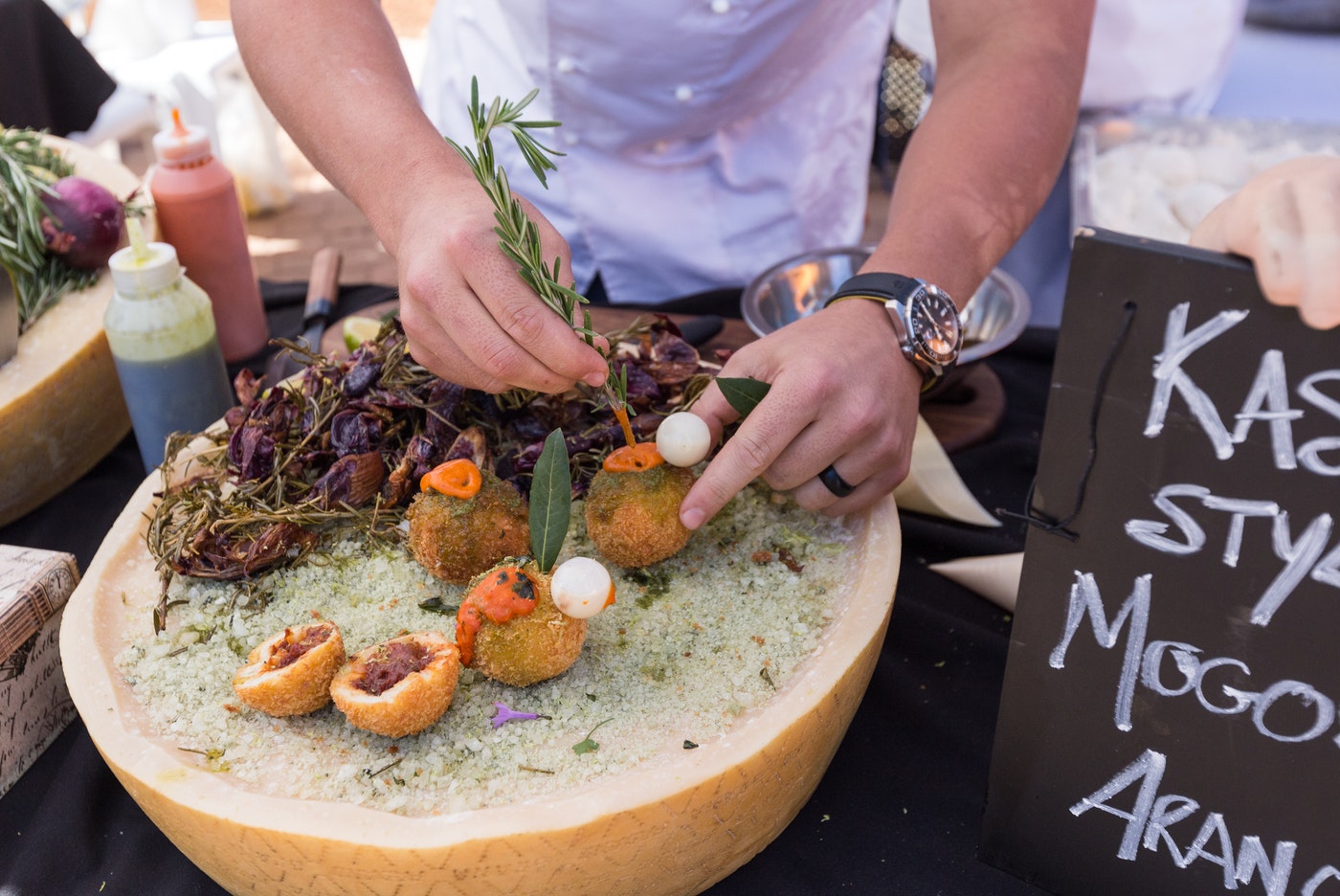Eating Slowly in Soweto
Heather Mason visits the Soweto Slow Food Festival
I drive slowly through the streets of Soweto at 10:00 a.m. on a sunny Saturday, crawling behind a phalanx of hooting taxis. No one is in a rush around here on a weekend morning, and I'm expecting to be one of the first to arrive at the Soweto Theatre.
And yet when I pull into the theatre parking lot, I have to squeeze my car into one of the last remaining spots. I'm here for the Soweto Eat-In, an annual event organised by Slow Food South Africa. I'm not sure what to expect.
I climb the stairs to the covered terrace in front of the Soweto Theatre - a bold, primary-colored architectural marvel adjacent to Jabulani Mall. The first thing I see is a cage full of guinea pigs. Staring down at these furry little rodents, I wasn't sure how to react at first. Then I thought about it and realised eating a guinea pig is really no different from eating a chicken, and probably way cheaper and less taxing on the environment than eating a cow.
"They are a great source of protein," says Tim Abaa, who breeds the guinea pigs, as well as the chickens and ducks beside them, on his plot in the township of Orange Farm. Tim is also selling his produce - piles of fat, orange carrots, green bell peppers, lettuce, spring onions - which shoppers are sorting through enthusiastically.
I spot food in all directions. Canned chilli pickle, ice cream, cheese, homegrown herbs, radishes, spinach, and cured meat.
This is South African Slow Food at its best.


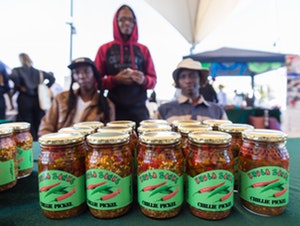
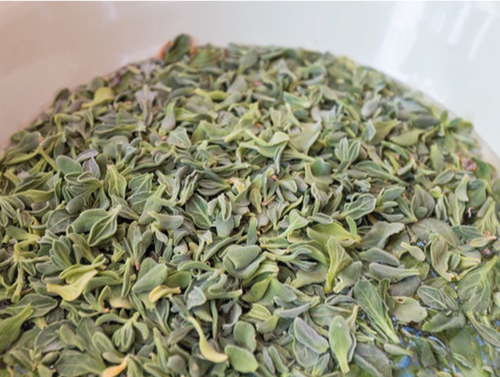
Slow Food in South Africa
The Slow Food movement started in Europe in the 1980s, as a way of protesting the onslaught of fast food and promoting the health and enjoyment of local produce - grown, prepared, and eaten slowly.
Soweto, a cacophonous township teeming with more than 1.5 million people, isn't the first place one would expect to find Slow Food. But a closer look suggests otherwise. Small, urban gardens abound in Soweto, as do tiny, independently owned food stands selling magwinya (fried dough), cow's liver, and other South African delicacies. Herds of goats wander the streets - free range, literally - as do flocks of chickens. Women hawk vegetables and roasted mielies on every corner.
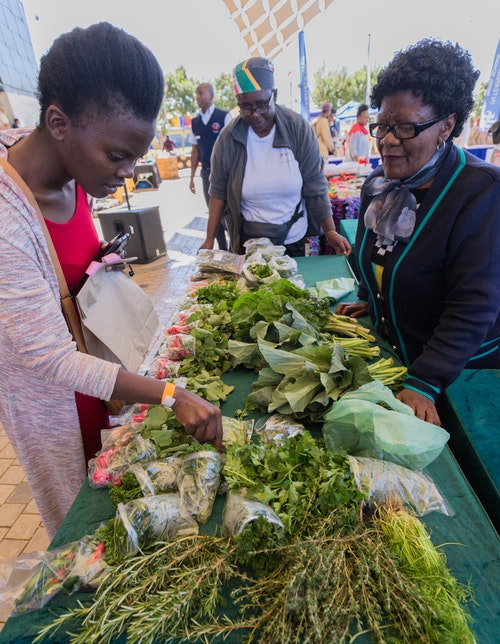

The Soweto Eat-In
The Eat-In is centered on a couple of main events.
Several local culinary schools are competing in a "Skaftini Challenge", preparing healthy school lunches with local ingredients, costing no more than R20 per lunch. ("Skaftini" is Soweto slang for lunch box.)
The table for each culinary school is piled high with brightly colored cardboard lunch boxes. There will be a contest later today, and the school with the winning skaftini will receive tickets to a Slow Food event in Italy.
I haven't eaten today, and a skaftini seems like as good a breakfast as any. I approach the table for the Capsicum Culinary Studio, where several giggly young women enthusiastically show me the chicken wrap, veggie chips, fruit bowl, and iced tea they've prepared for their skaftini. I grab a box, squeeze some mayo onto my wrap, and sit down to eat. The skaftini hits the spot. A little boy munches his own skaftini at a table nearby, chewing contentedly.
Each chef received a different part of the cow through a random drawing, and the creator of the winning dish will also receive a trip to Italy.
It's still early and the chefs aren't cooking yet. But I've got my eye on Table #1, where Chef Shane Smit of Serengeti Estates is preparing "Kasi Style Mogodu Arancini". Mogodu, a.k.a. tripe, or stomach, has always been an intimidating dish for me. But the thought of a delectable stuffed rice ball with mogodu in the middle sounds pretty palatable. I make a mental note to come back once the Flaming Mile has been set alight.
There are several tables inside the Soweto Theatre atrium, each one with some Slow-Food-inspired goodness on display. I bump into my foodie friend Ishay Govender-Ypma, who wrote a book on South African curry and has homemade sour pickle for me to try. At another table I find something called dune spinach, a fynbos plant indigenous to the Western Cape with a fresh, minty flavor. I grab a bite: dune spinach tastes like the beach.
Inside the theatre itself there is a "Free People's Conference" sponsored by a University of Johannesburg project called iZindaba Zokudla, or "Conversations About Food". The theme of the conference is "Agriculture for Radical Economic Transformation". There is a series of panel discussions throughout the day, including "Seeds and Indigenous Knowledge" and "Farmers and Food Processors Speak".
It sounds fascinating. But I take a peek into the dark theatre and conclude I can't bear to be inside on a morning like this.

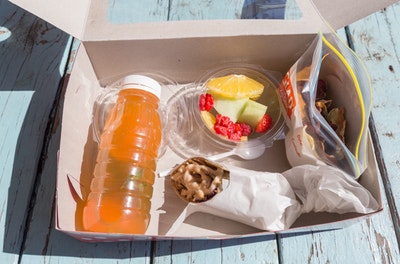
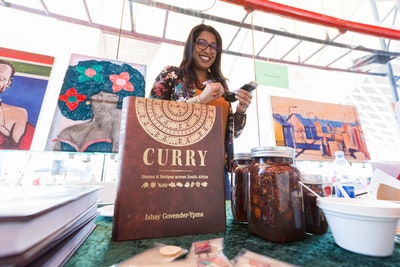
Saturday Vibes in Soweto
The Soweto Art and Craft Fair happens here on the first Saturday of every month, and today the fair is sharing space with the Eat-In. The two events meld together seamlessly - produce sellers and sausage-makers side-by-side with artsy t-shirt vendors and women selling intricately beaded bracelets and necklaces.
Then the music starts.
A young jazz trio takes the stage first, the lead musicians mixing vocals with trumpet and base. The stage is in the middle of the terrace, with the theatre's modern glass and brightly colored orange tiles providing a striking backdrop for the performers.
Apparently this is just a sound check, as the real musical performances only start in the afternoon. But the sound is already pitch-perfect to my ears.
My eyes light up when I turn around and spot the performers from BCUC, my favorite South African band. I've been following BCUC (short for Bantu Continua Uhuru Consciousness) for years; the band originated in Soweto but these days they carry their "Afropsychedelic" sound all over the world. This is a rare opportunity to catch BCUC performing in their hometown.
I'm going to have to leave before BCUC's main performance at 5:00 p.m., so I have high hopes for the sound check. The band - a seven-person combo of percussion, vocals, and base - takes the stage one by one. Cheex pounds his conga drums while lead singer Jovi starts his signature chants - mirrored shades glinting - interspersed with rhythmic blows on the whistle around his neck. Kgomotso, the lone woman in BCUC, saunters onstage and adds her soulful, soaring vocals and tambourine beats.
I struggle to steady my camera, as I can't help bouncing on the balls of my feet. BCUC's music is impossible not to move to. The intensity of their performance corresponds directly to the venue in which they perform, and this venue is perfect.
The sound check stretches into a frenetic 30-minute jam session. The hoard of 20-something culinary students is entranced, hooting and ululating atop their chairs at the back. The middle-aged hippies bob their heads. Two young girls park right in front of the stage, rocking out while eating ice cream.
Jovi's chanting builds to its inevitable battle-cry crescendo, as he flings his arms above his head. I abandon my camera and go into full-on-crazy-dance mode.
The greatest sound-check I've ever experienced comes to an end. I glance at my phone and realise it's time for me to leave.

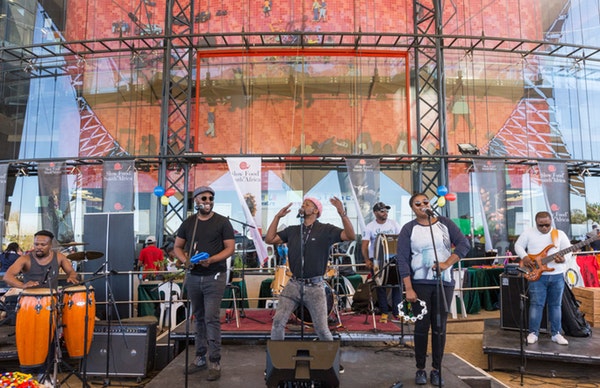
The Flaming Mile is just getting started, and I rush down to grab a mogodu arancini for the road. Chef Shane places the piping-hot, deep fried ball into a paper cone, topping it with an orange sauce and piercing it with a mysterious white ball attached to a plastic straw.
"Squeeze the pipette once, take a big bite, then squeeze it again and eat the rest," Shane instructs. I don't have time to inquire about the white liquid inside the pipette, but I take his word for it.
I toss the paper cone into the bin, hop into my car, and leave the Soweto Eat-In behind. It's a shame to be rushing away from all this delicious Slow Food and fast music. But I'll be back next year for sure.
For updates on future events, follow Slow Food Johannesburg and the Soweto Art and Craft Fair.
